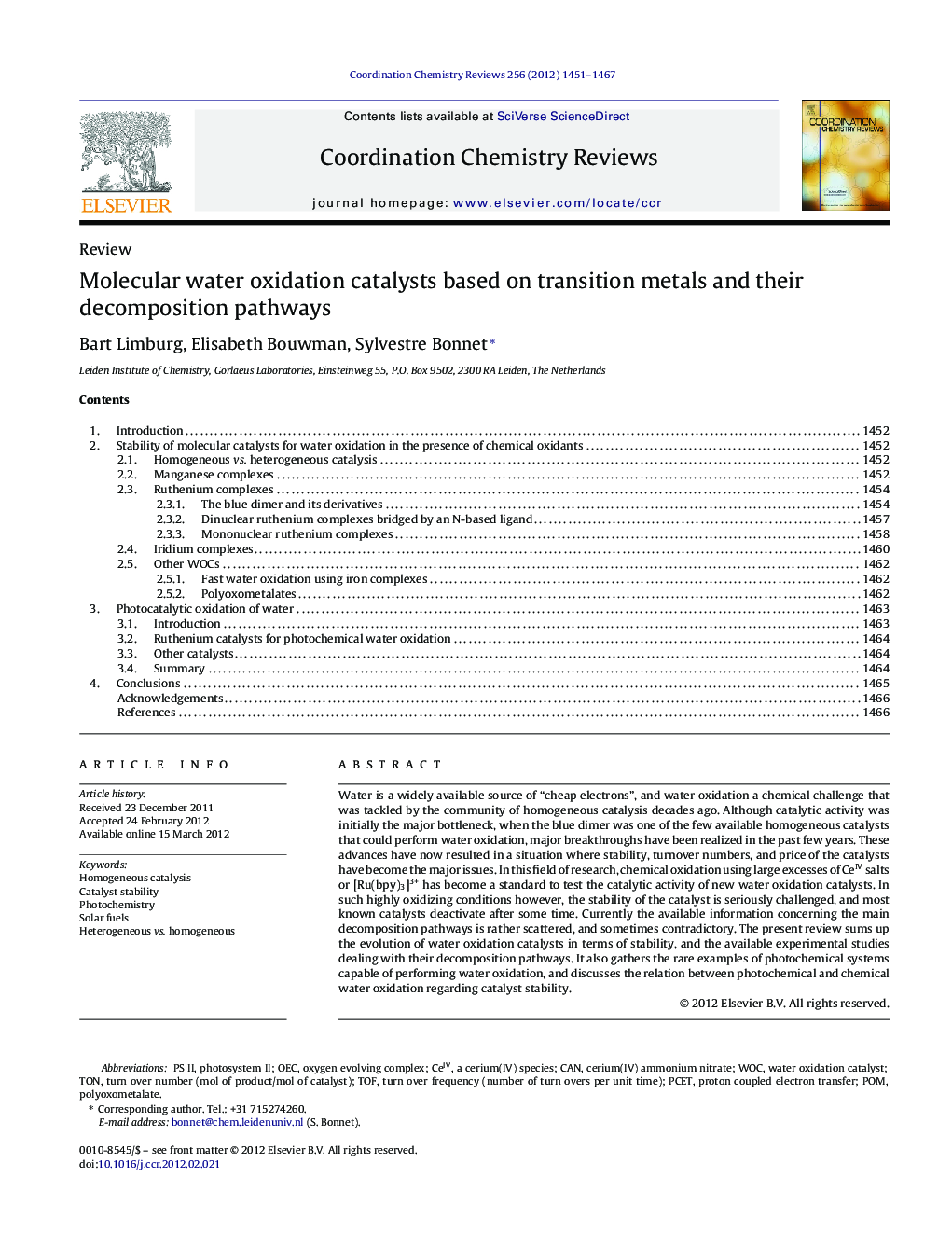| Article ID | Journal | Published Year | Pages | File Type |
|---|---|---|---|---|
| 1301069 | Coordination Chemistry Reviews | 2012 | 17 Pages |
Water is a widely available source of “cheap electrons”, and water oxidation a chemical challenge that was tackled by the community of homogeneous catalysis decades ago. Although catalytic activity was initially the major bottleneck, when the blue dimer was one of the few available homogeneous catalysts that could perform water oxidation, major breakthroughs have been realized in the past few years. These advances have now resulted in a situation where stability, turnover numbers, and price of the catalysts have become the major issues. In this field of research, chemical oxidation using large excesses of CeIV salts or [Ru(bpy)3]3+ has become a standard to test the catalytic activity of new water oxidation catalysts. In such highly oxidizing conditions however, the stability of the catalyst is seriously challenged, and most known catalysts deactivate after some time. Currently the available information concerning the main decomposition pathways is rather scattered, and sometimes contradictory. The present review sums up the evolution of water oxidation catalysts in terms of stability, and the available experimental studies dealing with their decomposition pathways. It also gathers the rare examples of photochemical systems capable of performing water oxidation, and discusses the relation between photochemical and chemical water oxidation regarding catalyst stability.
Graphical abstractFigure optionsDownload full-size imageDownload high-quality image (148 K)Download as PowerPoint slideHighlights► Standard conditions to test new homogeneous water oxidation catalysts are very harsh. ► Most active catalysts based on Mn, Ru, Co, and even Ir, decompose. ► Ligand design can improve catalyst stability. ► Oxidizing water photochemically may be milder than using an excess of CeIV.
